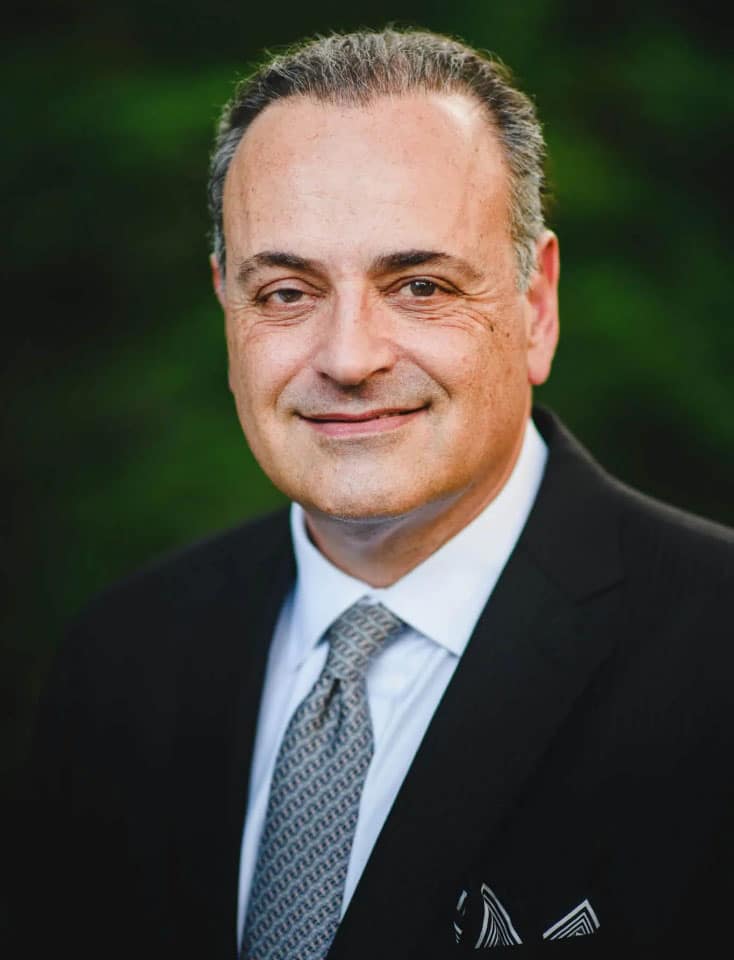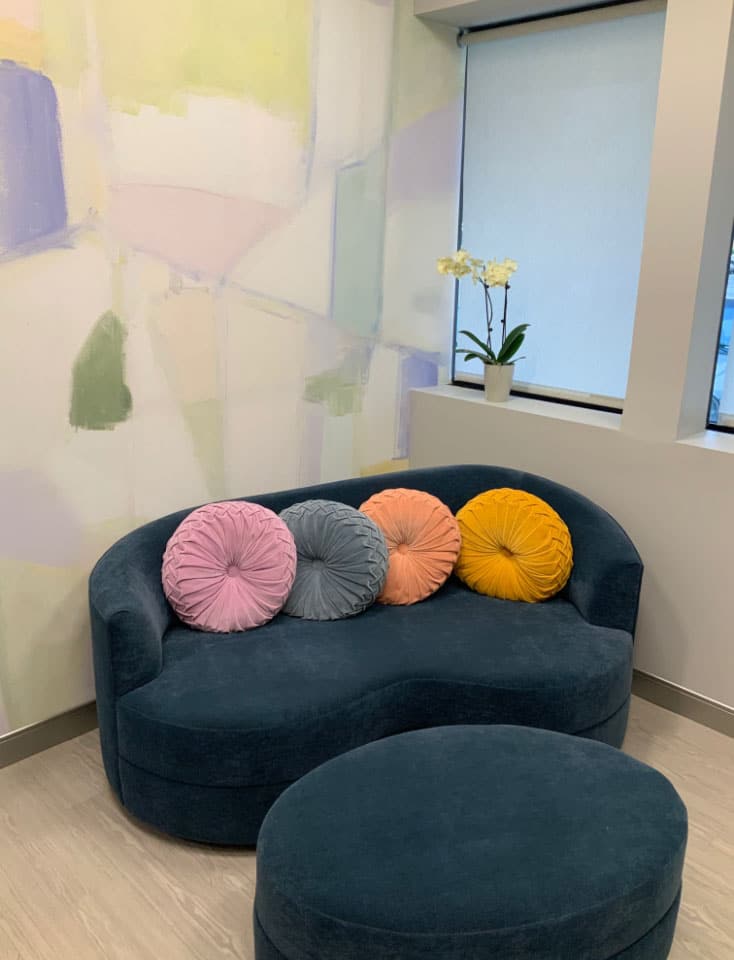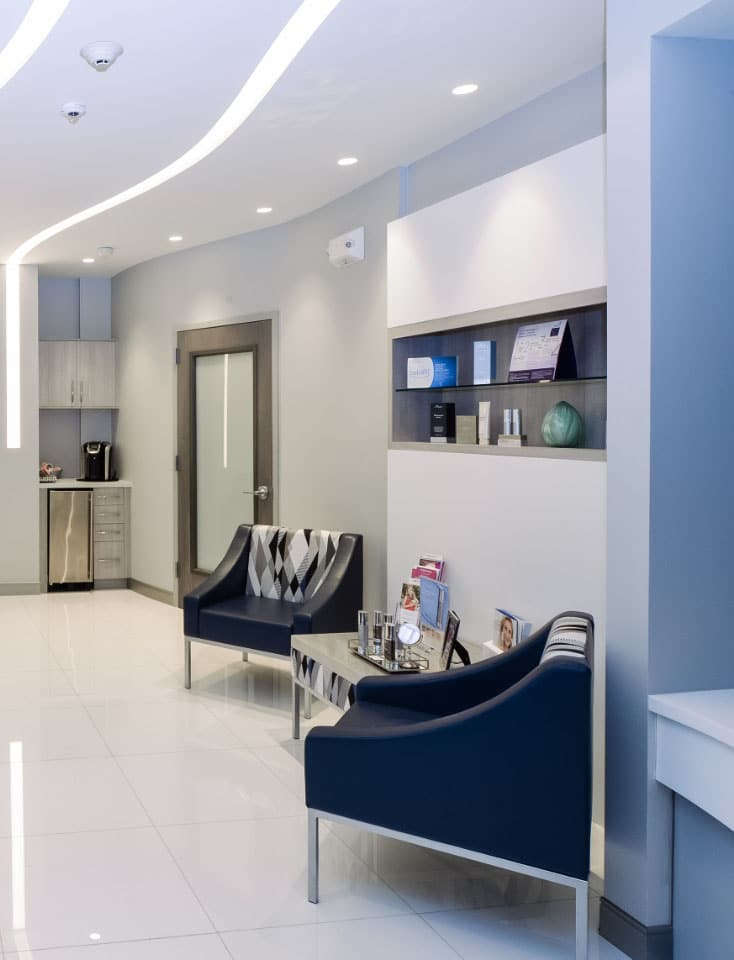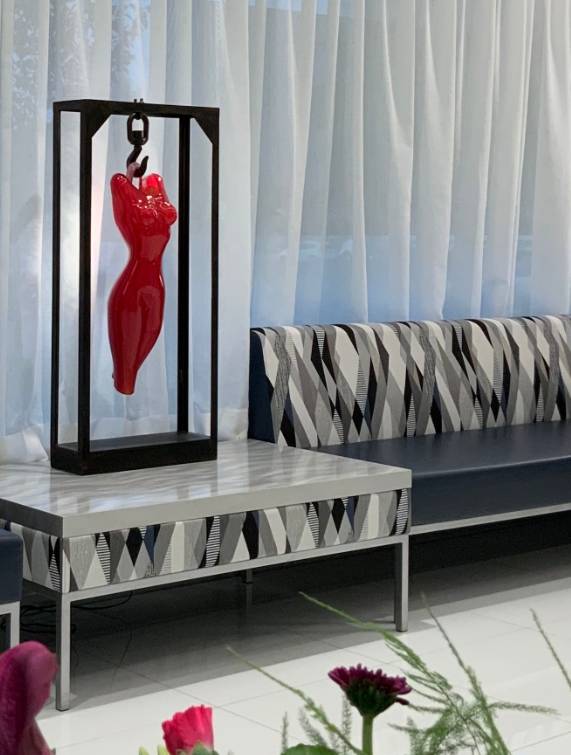Go Into Your Consultation Prepared!
Several years ago, a patient came in for a consultation and took out a full page of very well thought out questions. I told her how impressed I was with her list of questions. These questions are more specific to my specific preferences and practice of breast augmentation. Shortly thereafter I performed her surgery. One day, during a postoperative visit, she took out that same page of questions and handed it to me, saying, “please post these questions on your website so that others can get as much out of their consultation as I did during mine”. So, I am posting her questions, with some brief answers and links to additional information on my website for your reference. The answers I give are how I would answer that particular question. If you are seeing another surgeon, it is entirely possible that you may get a completely different answer! Read on…
The questions below are very basic but should be reviewed by anyone considering breast augmentation surgery. They are presented in “FAQ format” to make it easier to skip questions you do not need to address. At the end of many of the answers is a gold link “READ MORE…“. If you click on this link, you will be taken to the relevant section of this website that pertains to that particular question, providing you with much more detailed information on that particular question and answer. Use the back button on your browser to navigate back to this page.
Do you recommend a saline or silicone breast implant? – Why?
Both saline and silicone gel implants have been around for over fifty years. Both are proven very safe. All implants, saline or silicone gel consist of a silicone bag filled with either salt water (saline) or silicone gel. Silicone gel implants feel much more like a woman’s breast than does a saline filled implant, have less rippling, do not have a valve to fill them (a potential failure point for leaking of saline) and are more natural looking than saline implants. Approximately 99% of my patients are choosing silicone gel filled implants and so far none have asked to have them removed to be replaced with saline implants. All my patients who have leaking saline implants or capsule contractures with saline implants are getting them replaced with silicone gel implants.
READ MORE…
Do you prefer a smooth or textured surface on the implant?
If I am using a round implant, I prefer a smooth surface. A smooth surface will not adhere to the underside of the breast and there will be less rippling than seen with a textured implant because as the implant moves within the pocket and ripples, this will be transmitted to the skin surface. If I using a teardrop shaped, Gummy Bear implant (Allergan Natrelle 410), the situation is a little different. As these implants have a teardrop shape, they must have a textured surface to keep the implant from rotating within the breast pocket. All this is now a moot point because Allergan has discontinued the textured implants due to concerns regarding ALCL. READ MORE…
Do you prefer a round or anatomic (teardrop) shaped implant?
I have extensive experience with both saline as well as silicone filled breast implants. I have found that the teardrop shaped implants, in my opinion, do give a slightly more natural shape to the breast, with the silicone gel version yielding better shape than with saline. The upper breast fullness seems to be better preserved over time, as well as less bottoming out. That said, teardrop shaped implants are not recommended for those with a loose soft tissue envelope (very lax breast). For those with a tight soft tissue envelope with little actual breast tissue, or a constricted (“tubular”) breast, a teardrop implant works well here as it will put more forward projection over the lower central portion of the breast (where the nipple is located) where projection is needed most. When I look at my patients a year out from surgery, and intentionally blind myself as to which implant i used, I have a great deal of difficulty determining which breasts have round and which have anatomical implants inside them. That said, considering the fact that an anatomical implant must have a textured surface to anchor it in place, and that the risk of developing ALCL is greater than we originally thought (1 in 4000 – 8000 rather than 1 in 200,000), I cannot justify the risk of ALCL just to get a very slightly improved difference in contour. It is just not worth it! READ MORE…
How do you prefer to select the size of the implant?
I prefer to use a method called “soft tissue based planning. This scientifically based system uses a series of key measurements of the breast to determine the optimum volume for a breast implant. It is associated with the lowest rate of re-operation and the fastest recovery (98% experience a 24 hour recovery) and the least amount of post-operative discomfort (97% need nothing more than ibuprofin (Advil) or tylenol). I do not use methods that involve guesswork such as putting implants, bags of rice or water into a sizing bra or just picking out implant size from sample implants on a table. READ MORE…
Which is better: “above the muscle” or “below the muscle”?
My preference is ALL (I rarely ever say “ALL” or “NONE”) primary (first time) augmentations is to place the implant BELOW the pectoralis muscle for the following reasons: greater soft tissue coverage makes the implant less visible and palpable, less interference with mammography (that is what my radiology colleagues who specialize in breast imaging tell me), less risk of synmastia (breasts being too close), better support of the implant and less stretching of the breast. This latter point is my opinion – I am not sure if all surgeons will agree with me. I once had a woman come to me for replacement of her saline implants with silicone. She insisted her breasts were symmetric before the first surgeon put in her implants. However, the left breast was stretched and pulled downwards more than the right breast. I had no explanation until I replaced her implants. I found the right implant under the muscle and the left one above the muscle!!! I will go further and make the following statement: With today’s Dual-Plane techniques, many (not all!) women with some glandular sagging can avoid the additional scars of a mastopexy (breast lift). From my observations, using the minimally traumatic surgical techniques that I use, I do not believe that there is any increase in postoperative pain, recovery, healing or downtime in using a sub-muscular approach versus a sub-glandular approach. I cannot think of a single reason to ever place a breast implant above the muscle in a first time augmentation. READ MORE…
What is your preferred incision location for surgery?
Incisions are made in inconspicuous places on the breast to minimize scar visibility. These incisions may be located in the armpit (transaxillary), around the nipple (periareolar), lower breast crease (inframammary) and through the navel (transumbilical). I have experience with the first three. The last approach I will not do because it involves nothing but blunt dissection and pain with little precision in creating the implant pocket. The armpit incision is great for a saline implant, but not so good for silicone gel because the incision size is very small and silicone gel implants require a larger incision. If you make such a larger incision in the armpit, then you defeat the purpose of the small incision approach. A nipple approach will work with saline as well as silicone gel implants – my only issues with it are two fold: you cannot control the quality of the scar which is not always so invisible and now lies on the most visible part of the breast, and the other, as the nipple ducts are full of bacteria, there is a greater chance of implant contamination with these organisms, thus a higher rate of capsule contracture after surgery.
My preferred approach in the majority of first time augmentations and all revision cases is a breast crease incision. The scar is usually quite acceptable and hidden by the overlying breast, there is a much greater degree of access to and visibility of the inside of the breast, it is easiest to create a dual plane pocket and in my opinion gives the best control over symmetry – either maintaining it or improving it if the breasts were noticeably asymmetric prior to surgery. Surgery can also be performed with the least amount of blood loss and surgical trauma giving the fastest recovery and the lowest risk of complications and need for re-operation. READ MORE…
Do you offer 3D computer simulation so that I can visualize what I might look like after surgery?
Yes. I offer the Canfield Vectra 3-D Computerized imaging system. I am also on the advisory board for this imaging system. You will be able to see your images on a 3D screen using special glasses to give you the full 3-D effect. You will even be able to see your images at home on your computer on a special Canfield website viewmyconsult.com. READ MORE…
How long will it take you to perform my surgery?
Breast augmentation surgery usually takes me about 35 – 50 minutes to perform. Most patients stay in the recovery room for about 45 minutes and then are discharged home.
What type of anesthesia do you prefer for breast augmentation?
I prefer to perform breast augmentation with general anesthesia. This means that you will be asleep for the duration of the procedure. Although surgery can be performed under either local or intravenous sedation, I will not do so because you will require much more medication to keep you sedated and it will take longer for you to be ready to go home. Also, during the performance of your surgery, I will require full relaxation of your pectoral muscles. To achieve this, certain short acting muscle relaxer medication is given and you will not be able to breathe on your own during this time, therefore general anesthesia is essential. Local anesthesia (“Awake breast augmentation”) is the worst choice of all – there is no benefit for you to be awake, you really cannot judge your results on the table during surgery and I cannot give you the required intravenous muscle relaxers. With local anesthesia and intravenous sedation, you will not achieve a one day recovery. Without muscle relaxation, the surgery will require much more pulling and tugging on your pectoral muscles which will translate into more pain and downtime after surgery. READ MORE…
Are the sutures (stitches) dissolveable?
Yes. When I perform a breast augmentation surgery, all sutures used will dissolve, usually in three to six months. Sometimes the sutures are placed below the skin only; these will not need to be removed. Occasionally, there is a small “tail” of a suture exiting each side of the wound. These are painlessly clipped at three weeks.
How are the wounds dressed?
I dress the incisions using only Dermabond glue or if a breast lift has been performed, Prineo – Dermabond glue. The latter is a mesh tape that is impregnated with Dermabond glue and stays in place for three weeks. These products provide a watertight dressing and helps to keep out bacteria that might cause infection. No or other dressings are needed.
Are there any dietary or medication restrictions prior to surgery?
There are no dietary restrictions. We do caution you not to take dietary supplements that contain herbs as many of them can cause problems with bleeding and other issues during surgery. I have even seen one herb (Ginseng) cause spontaneous bleeding six months after surgery after it was taken in above recommended doses. We also supply you with a detailed list of medications to avoid prior to surgery.
Do I need to stop smoking/Vaping/e-cigarettes prior to surgery?
Smoking/vaping/e-cigarettes constricts blood vessels, reducing circulation of oxygen and nutrients essential to healing wounds. Please be nicotine free for at least six weeks before and after surgery if at all possible. Smoking after surgery especially can increase the rate of infection, wound healing problems and other complications. READ MORE…
How will I feel immediately after breast augmentation?
You may experience some moderate discomfort when you awaken from surgery. Those who have had children say it feels like their milk coming in. Those who have not had children note that it feels like a “tightness” in their breasts. After you are taking liquids and some crackers by mouth, you will be given ibuprofen (Advil). When you get home, you will take a two hour nap. After awakening from this, you should feel much, much more comfortable. There will be mild to moderate swelling, rarely more than that. The nipples and breasts (outside and lower portion) may be numb. In the great majority of cases, the sensation will return. Many of my patients resume minor household chores (cooking, light cleaning) and often go out to dinner and shopping that very same day. Over the next several days, you should feel more and more like yourself. READ MORE…
What will I need to take for discomfort after surgery?
You should not need narcotics after surgery. In my experience using the “One Day Recovery” breast augmentation technique, there is no increase in discomfort with placement of the implant below the muscle. In fact, I place all implants below the muscle. Using the One Day Recovery technique, 97% of my patients require nothing stronger than tylenol or Ibuprofen (Advil) after surgery. 98% of patients resume normal activities (except strenuous exercise) the very next day!
We do not give you a prescription for narcotic pain medicine “just in case you need it” because experience shows us that you will (97% chance) NOT need any narcotic pain medicine. Narcotics can make you nauseated and slow down your recovery. READ MORE…
How long will it take me to recover?”
All my breast augmentation surgeries are performed with the intention of recovery within 24 hours or less. I define recovery as being able to perform the majority of your activites of daily living except strenuous exercise. “One-Day Breast Augmentation Surgery” is the name of the technique and processes that allow me to perform a surgery such that you stand a 98% chance of a recovery within one day and 97% chance of not needing any medication stronger than tylenol or advil to manage discomfort. There is also a three year re-operation rate associated with this procedure of only 2%, far less than the national average of 15% for more. READ MORE…
When can I shower after surgery?
You will be given a detailed, step-by-step recovery plan that will include showering. You will take your first shower a couple of hours after you get home following your surgery the very same day!
When can I wear a bra? What clothing should I wear after surgery?
You may wear a sports bra as soon as you like. There is no necessity to wear a bra right away after surgery if you do not want to. Within a few days of surgery, you should begin to wear a bra or sports bra for support. After six to eight weeks, when the wound is well healed, you may wear a bra with an underwire. On the day of surgery you should have a loose fitting shirt, preferably a zip-up one. After that, there are no restrictions on your clothing. You may wear whatever you feel most comfortable it. Most patients wear loose fitting clothes the first few days, but that is only by preference, not a rule.
When can I resume driving?
The very next day, assuming you feel up to it and can drive defensively. Most patients return to driving by the next day or the following day after surgery.
When will I need to return after surgery?”
You will need to be seen one or two days after surgery. Baseline photos will be taken of your augmented breasts to follow the evolution of the shape over time. You will be seen three weeks later as well and given instructions for scar management. At four months, photos and 3D post operative images will be taken . You will receive a copy of your before and after photos in 3D. I will also see you again at twelve months. After that, you need not, but are always welcome to return. I do not charge a fee for follow up visits for breast augmentation, even when years later. I am always happy to see you and get some long term follow up information!
When can I go back to work?
You may go back to work when you feel up to it. The wounds are dressed with a water tight sealant and you can lift up to 25 pounds or so. You will be able to drive the next morning. As long as you do not have to climb (tree surgeon, construction worker), submerse your wounds (scuba diver), lift anything more than 25 lbs or potentially get into an altercation (police officer), you should be able to return to work the next morning if you so desire. Many patients have. Typical return to work is 2 – 3 days. I have had several police officers return the next day or a few days later, but they were advised to make sure they are not placed in a position where they are at risk to become physically injured. Not all of them listen to me. Read the third to last paragraph here.
When can I return to exercise/sex?
Sex may be resumed the day of surgery if you feel so inclined, but use your good judgment. “Olympic sex” should be avoided. Fast walking on a treadmill is OK, but aerobic exercise should wait two weeks. Strenuous exercise, including weight lifting should be avoided for about three to four weeks. Use your judgment.
Will I be able to breast feed after surgery?”
Assuming you were able to do so previously, or would otherwise be able to breast feed (not all women can), you should be able to breast feed after surgery. Breast augmentation will not disrupt the ducts from the breast gland to the nipple the way a breast reduction can. The same generally holds true if a breast lift was also required in addition to the breast augmentation.
What are the most common reasons for re-operation?
In the short term, that is the first three years, the most common reasons for re-operation are: hematoma (<1%), bottoming out (<1%), capsule contracture (< 0.2%) and miscellaneous reasons: request for size change, adjustment in pocket dimensions, etc (<1%). My total three year re-operation rate is just about 2% versus the national average of 15% and higher (see Allergan and Mentor premarket approval studies submitted to the FDA). I attribute this to implant selection using soft tissue based planning, minimally traumatic surgical technique, meticulous attention to sterility and extensive experience. Breast implants do not last forever, and with the passage of time, implants will need to be changed, the rate of capsule contracture may increase, you may gain or lose weight and desire a change in implant size, as gravity acts upon your tissues you may desire a mastopexy (breast lift) and other miscellaneous reasons for re-operation in the long term. READ MORE…
What are your most common complications, how often do they happen?
Complications following breast augmentation surgery are uncommon. They may include capsular contracture, swelling and pain, infection around the implant, a change in nipple sensation, and breakage or leakage of the implant. Some other complications that may arise from breast augmentation surgery are described in more detail below:
Hematoma
Hematoma occurs when a small blood vessel within the pocket, usually on the muscle, begins to bleed after surgery. This usually occurs several hours after surgery, most often within the first 24 hours but can occur within the first four weeks after surgery in unusual cases. There is not enough room in the pocket to accumulate a lot of blood so this is rarely a life-threatening situation. The breast will progressively get larger and harder over a few hours time. The treatment is return to the operating room to find the blood vessel that is bleeding and cauterize it. When taken care of within a day of when it occurs there should be no impact upon your recovery or your final result. By avoiding blunt tissue dissection and only using the most delicate of techniques to create the implant pocket, the risk of hematoma is drastically reduced. In my experience, hematoma occurs in less than 1% of my breast augmentation surgeries.
Infection
Infection usually presents about one to four weeks after surgery as redness on the breast, usually around the wound, some swelling, tenderness and occasionally drainage from the wound. Sometimes there is also pain in the breast. In the majority of cases, this can be treated with antibiotics. I usually prefer a day or two of intravenous antibiotics in the hospital followed by oral antibiotics at home, as every case is different and when caught early enough, sometimes oral antibiotics without hospital admission is adequate. In extremely rare and unusual cases, if the infection involves the implant, a return trip to the operating room is indicated. In the majority of these cases, a washout and replacement with a new implant and placing a drain plus antibiotics (salvage procedure) is successful. Worst case scenario, the implant may need to be removed and put back in four to six months. In my practice, infection occurs in less than 1% of my breast augmentations.
Capsule Contracture
Capsule contracture occurs when the normal scar tissue capsule that forms around the implant becomes thick and contracts, making the breast feel hard. There may also be distortion in shape of the breast and the breast may ride upwards on the chest, being higher up than the other breast. Treatment consists of removal of the implant and all capsule tissue inside the breast, and replacement with a new, similar implant. As the cause of capsule contracture is believed to be related to post-operative bleeding and contamination with low virulence bacteria, I have been able to take special precautions and institute practices during surgery that have dramatically reduced the incidence of need for re-operation for this problem to about 0.2%. The national average for this problem is much higher at around 10%.
READ MORE…
Bottoming Out
Bottoming out is due to the breast tissue stretching to accommodate the implant. It frequently occurs to a small extent, one that doesn’t compromise the aesthetic result nor cause concern to the patient. When it is more severe, typically in cases where the breast crease drops more than 1.5 cm, then there may be cause for concern regarding the shape of the breast. Although the propensity for your tissue to stretch is based upon the biology of your tissues and neither patient nor surgeon can change this, we can reduce the risk for stretching to occur to the extent that surgery is indicated by not using an oversized implant. In my experience, re-operation for bottoming out occurs in about 1% of breast augmentation cases, usually in the first year following surgery.
READ MORE…
Implant Rupture
Rupture of the implants can occur as breast implants are mechanical devices, and they will eventually fail. When saline breast implants fail, they often deflate quickly and can be easily removed. Device failure rates are approximately 1 – 2% per year, which is small. In the case of saline implants, the valve used for inflation is a common reason for device failure. Silicone gel implants do not have a valve. If an implant shell cracks, saline or silicone gel may leak out. Your body will absorb the saline with no untoward effects on your health. If a gel implant should rupture, the scar tissue capsule described previously in this article will usually contain the gel. The gel is biologically inert and poses no threat to your health, either. Today’s breast implants are made much more durable than previously. A silicone gel implant is made to withstand a compressive force equal to twenty five times that sustained during a mammogram. Over the course of your lifetime, a breast implant may fail and require replacement. Replacement is usually a very simple surgery.
Alterations in Nipple and Breast Sensation
The most common alteration in nipple sensation is a reduction in sensitivity, which can range from slightly diminished to no sensation at all. The good news is that in the vast majority of these cases, the sensitivity returns, although it may take days, weeks, or even several months. In rare cases, loss of nipple sensitivity can be permanent. Sometimes as the sensation is returning, usually a few weeks after surgery, there can actually be a heightened sensitivity which can be annoying. The good news is that this always seems to resolve, usually within a few weeks.
Need for Re-Operation
Regardless of the type of implant, it is likely that women with implants will need to have one or more additional surgeries (re-operations) over the course of their lives. Reasons for a breast augmentation re-operation may include the following: capsular contracture, wrinkling, asymmetry, implant rupture/deflation, and excessive tissue stretching as described above. The idea is to make the interval between the first and possible next (not everyone has a second surgery later on) surgery as long as possible.
Will I need a breast lift (mastopexy)?
If your nipples are pointing downwards, then the answer is yes, almost for certain you will need a breast lift. Aside from this situation, only an in-person consultation can determine if you require a breast lift, or if a dual plane technique will be enough to address the sagging in your breasts. READ MORE…
What is my policy towards revision?
Revision and re-operation are not always the same thing. A revision is a re-operation, but not all re-operations (i.e. exploration for bleeding) are considered revisions. A revision is an operation to adjust the cosmetic result in such a way so as to attempt to restore the result to the way it looked immediately or shortly after original surgery. Examples of revision are: adjustment of the pocket, correction of implant malposition, changing one implant with one of a different size so as to improve symmetry. Most of the time, revisions are required due to issues that arise following things out of our control as surgeon or patient such as tissue stretch. Much less frequently, a revision may be required because a judgment call made during surgery may not have been correct such as when selecting two different implants when there is substantial asymmetry of the breasts but a different size combination would have been more ideal.
I have no set policy regarding these situations. Each one is dealt with on an individual basis. If the cause of the problem has to do with the patient’s own wound healing and tissue characteristics out of my control, then I usually charge for operating room and anesthesia. In some cases there may be a professional fee, usually there is not when addressed within the first year following surgery. If I feel that the cause of the problem was something that I could or should have done differently, then I may decide to absorb all the costs myself. Again, each situation is decided upon by its individual merits.
Summary
These questions deal more with my personal approach to and experience with breast augmentation surgery than just basic general facts about the procedure. If there are any particular questions that I have not addressed here, please feel free to let me know; I will probably want to add them to this list.
Prev Topic: Essential Breast Augmentation Points to Understand »









